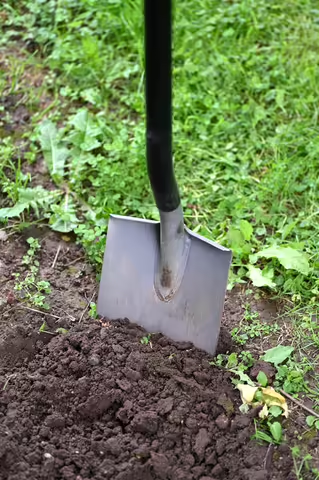URBANA, Ill. – As the growing season wraps up and gardeners put vegetable beds to rest and clean and store tools for the winter, there is one task they may be forgetting. Testing the soil’s nutrients can provide a better understanding of a garden’s health and save money in the long run.
Over time, soil fertility, pH, and even soil structure can change as nutrients are depleted. Testing soils will identify missing nutrients that can then be addressed as needed. Unless there is a specific issue being remedied, soil should be tested every three to five years.
Fall is a great time for gardeners to test since soil temperatures are still above 50°F and the growing season is slowing down. Any added organic matter will then decompose, and nutrients will filter into the soil over winter well before planting season.
University of Illinois Extension horticulture educator Sarah Vogel says depending on the soil’s natural fertility and what is being grown in it, plants can perform well for years without needing fertilizer. While fertilization can help with plant vigor and vitality, experts recommend first establishing a need and purpose for fertilizer. Understanding soil nutrient concentrations before applying fertilizer is important in a sustainable landscape.
“If fertilizer is not necessary, why waste product and time applying it?” says Vogel. “Overfertilization can harm trees, shrubs, and even turfgrass especially during drought conditions.”
Excess fertilizer can also end up in waterways and lead to aquatic life and water quality issues.
A basic soil test will measure soil pH and organic matter as well as macronutrients such as phosphorus, potassium, sulfur, calcium, and magnesium. Nutrients are most readily available to plants when the soil pH is between 6.5 and 7 and most horticultural crops do well in the range of 6 to 6.8. Many soil testing labs will also measure amounts of micronutrients such as boron, copper, iron, or manganese.
“If you are concerned about soil contaminants, such as lead in an urban site, contact the soil lab about specific instructions and additional costs,” Vogel says.
Since soil samples must represent an entire yard or garden, take several core samples from evenly distributed spots and then mix them together. Remove any roots, rocks, or twigs. Gardeners can use a soil probe, sharp spade, or trowel to gather soil, taking care to remove the same amount for each sample. If comparing soils, such as a seemingly fertile soil and one that does not produce well, take and test two separate samples.
Home soil test kits are widely variable and not recommended. There are several soil testing labs in Illinois. Labs vary in pricing and services, so call before mailing soil samples.
Many labs will provide interpretation of the soil test results upon request and Illinois Extension horticulture staff can provide further guidance. Locate a local county Extension office go.illinois.edu/ExtensionOffice.
Along with soil testing, preventative plant care can reduce the need for not only fertilizers but herbicides and pesticides as well. Most healthy trees and shrubs do not need fertilizers once they are mature and native annuals and perennials are more suited to local soils than non-native species reducing the need for fertilizer. Established lawns benefit from cultural practices such as using disease-resistant varieties, soil aeration, over-seeding, and mowing at the correct height with sharp mower blades.
SOURCE: Sarah Vogel, Horticulture Educator, University of Illinois Extension
ABOUT EXTENSION: Illinois Extension leads public outreach for University of Illinois by translating research into action plans that allow Illinois families, businesses, and community leaders to solve problems, make informed decisions, and adapt to changes and opportunities.
PHOTO ACCESS: The photo in this article is available to download for media use.
